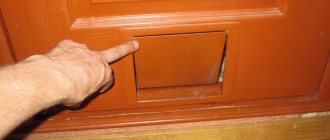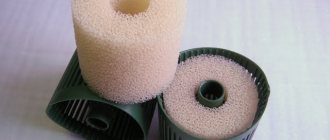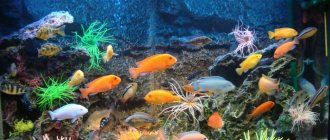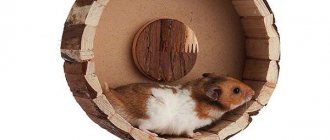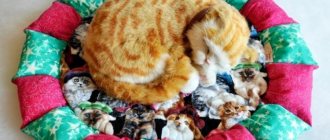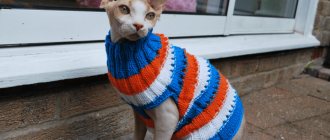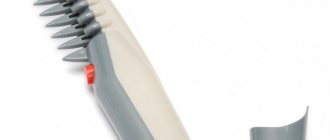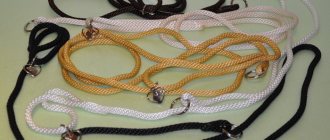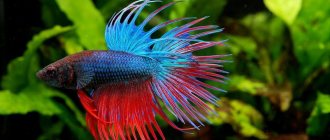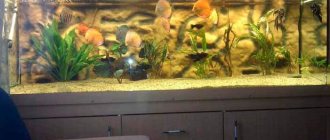Semi-black purple guppy
With a semi-black body and dark purple tails and fins, this species of guppy is another exquisite example of what selective breeding can achieve in guppies.
Semi-black pastel Guppy
The non-black parts of pastel guppy fish can be any pastel color except yellow. The tail fin of these fish is usually pastel white.
Solid color guppies
These guppies can be blue, yellow, red, or even black in color, and they are characterized by having one solid color on both their body and fins.
Bicolor guppies
Bi-colored guppies have a clear base color, which can be red, green or blue, or any other color that does not fit into the previous color categories. The second color makes up at least 25% of their tail color
Multicolored guppies
Multi-colored guppies have at least three color variants, with all colors having an equal distribution in the tail.
Metal guppies
Metallic guppies have the unique ability to hide from predators thanks to iridophore pigment, which allows them to change colors to mimic their environment.
Koi Guppy
Koi guppies resemble the color scheme of koi fish. They have red tails, a white body and a red face. These features can sometimes be found even in female fish.
Panda Guppy
Male Panda guppies are more likely to swim in groups than regular (other species) guppies. Often a group of three fish is formed, accompanied by one male. In large groups of more than 10 males behave more cheerfully and actively. In large groups, Pandas can split into subgroups and then life takes on a different meaning for them. Females recognize their own and “strangers”; they see individuality in each of them. When a male does not belong to a subgroup, he acts “strangely” while flirting with and courting one of the females, and other males, noticing this, begin to pursue the intruder in order to stop his attempt to enter their domain.
To attract females, males turn towards them in such a position that their glossy and bright sides shine in the light in front of the females. Males often like to approach females from behind, especially while they are searching for food.
Jaravi Lapis Guppy
Named after the aquamarine blue color of the lapis lazuli gemstone, this guppy strain has a blue head and is similar to the Japanese blue guppy. The extra color gene on its Y chromosome is what gives this guppy the blue color of its head.
Moscow Guppies
Moscow guppies are a group of breeding forms of the common guppy (Poecilia reticulata). Surprisingly, domestic and Western breeders call different color forms of guppies “Moscow”. For the former, these are red varieties with a well-developed veil tail, for the latter, fish with a dark blue, uniform body color. A similar confusion occurred at one of the international guppy exhibitions, when the victory was awarded to dark blue fish from the collection of Japanese breeders, who in the description indicated the place of purchase of the producers - Moscow. Unfortunately, due to the lack of a unified classification of guppy breeds, the organizers did not know that the name “Moscow” was already borne by another color variation.
Platinum Guppy
In nature, the body length of guuppies usually does not exceed 6 cm. Breeders have bred guppies with a body length of about 8 cm. Females and males differ greatly from each other in size, shape and color.
Females
Female platinum red tail guppies (Guppy platinum Red Tail) are much larger than males, their body length averages 5.5–6 cm (maximum 8 cm), the abdomen is rounded, inconspicuously colored, usually gray, brownish or olive, near the anus the holes are a large dark spot. The fins of females of the original (wild) form and of most purebred representatives are round and transparent. Breed groups have been bred in which the females have a brightly colored body, with decorations on the fins in the form of specks of black, yellow and reddish colors.
Males
Male platinum red-tail guppies (Guppy platinum Red Tail) on average do not exceed 3 cm in length, they have a small, narrow body, brightly colored in the back with a pattern of spots of various shapes and colors, moving to the caudal fin.
- In nature, several color variations of male guppies are known. In males from the Venezuelan population, the body color is predominantly green, in Barbadian males the color is red-black, in Trinidadian males it is golden-green, blue, and violet. Currently, through the efforts of breeders, a wide variety of forms of male guppies have been developed. They vary greatly in size and shape of the caudal fin and coloring. From wild species of guppies, the males of which have a small rounded fin, breeds have been bred that have a ribbon-shaped, fan-shaped, sword-shaped, lyre-shaped, trailed, awl-shaped and other forms of caudal fin. The size of the caudal fin of males of some breeds exceeds the length of the body of the fish itself. The dorsal fin is also varied in shape. It can be round, triangular, rectangular, ribbon-shaped.
- One of the reasons for the great popularity of guppies is the ability of this South American fish to live in a wide variety of conditions. Guppy is the most unpretentious of aquarium fish. A pair of guppies can be content with an aquarium volume of 1.5–2 liters; a male needs 0.5 liters of water, and a female needs about one liter. For large breeds of guppies and breeds with veil tails, aquariums should be two to three times larger. Usually an aquarium with 1–1.5 liters of water per male and 2–3 liters per female is sufficient for them. The optimal water level for guppies is 35–40 cm. To prevent the fish from jumping out of the water, the aquarium is not filled to the brim, leaving 5–6 cm free, and the top of the aquarium is covered with a cover glass. The length of the aquarium for breeding forms of guppy must be at least 40 cm.
Dragon Head Guppy
This type of guppy lives up to its name, having an interesting color scheme and tail pattern. The tail and dorsal fins show brighter red-orange colors, while the fish's body is dark in color all the way to its midsection, where it becomes lighter in color.
Type of guppy based on eye color
Guppies with red eyes
This species of guppies is very rare and they tend to be quite small. However, their eyes have a bright red, red-orange color that is easily noticeable.
Red-eyed Albino Guppy
Albino fish lack the melanin pigment in their eyes, which explains the reddish tint to the color they end up having.
Diseases
Guppy fish suffer from the same diseases that affect tropical fish. Therefore, the stamina of goosebumps does not always save. Sometimes a severe infection occurs or the fish is injured. Treating aquarium inhabitants is a complex matter.
Sick people are often destroyed, after which the aquarium must be disinfected, and proper care must not be forgotten
Tail destruction
The condition of the tail can be spoiled by:
- fin rot, which destroys the interray tissue, is more dangerous for scarf guppies;
- red scab, marked by a bright red coating that affects the tip of the tail, then slowly destroys the entire caudal fin, more often appears in males;
- splitting, when the fin splits longitudinally, threatens veiled males.
Hump formation
If the fish are old, curvature is normal; the appearance of a hump in fertile guppies is a disease caused by:
- injury;
- scoliosis;
- sudden changes in the volume of the holding tank, overcrowding;
- overfeeding;
- the appearance of tuberculosis.
Oxygen starvation
The state of hypoxia is considered fatal for fish.
Symptoms: Breathing rapidly or with difficulty, hovering or swimming close to the surface with the mouth open, noticeably swollen gills and lack of coordination. In severe cases, the fish lie on the bottom. The color sometimes becomes brighter, the fish's eyes become glassy and do not move.
Inactivity
If the guppy begins to move little and does not want to eat food, the body becomes covered with a mucous coating, which tightens the gill slits and sticks the fins together - this is a manifestation of costosis. In addition, it is difficult for the fish to breathe, and the body becomes covered with bluish spots.
Types of guppies based on pectoral fins
Guppy Dumbo (Elephant Ears)
Dumbo guppy (Elephant ears) is a breeding form of the common guppy (Poecilia reticulata), the distinctive feature of which is its highly developed pectoral fins. From the outside, they really resemble the large ears of an elephant, which is why the fish was named after the famous cartoon character
Otherwise, these are the same easy-to-care and maintain fish. They are an excellent choice for beginner aquarists. Dumbo guppies are not only hardy and beautiful, but also easy to breed at home, because they are viviparous. This means that Dumbo do not lay eggs, as most fish species do, but instead give birth to fully formed fry.
Description and habitat
Guppy is a small fish of the Poeciliidae family. Their homeland is South America; they are found in Barbados, Trinidad, the Amazon Valley, Brazil, and Venezuela.
Unpretentiousness and high survival rate contribute to the successful spread of guppies throughout the world. Schools of wild fish reproduce safely even in the lakes of the Moscow region.
These fish swim with equal pleasure in both fresh and weakly concentrated salt water.
At the end of the 19th century, the guppy was introduced to European countries from Trinidad and quickly became a favorite of aquarists.
Natural specimens are much smaller than the inhabitants of domestic ponds; they feed on mosquitoes, mosquitoes, larvae, and all small insects. They belong to the cypriniform species and are viviparous.
Males are larger than females, reaching a length of 6-7 cm, and females - 4-5 cm. Guppies' scales are mesh-like and diamond-shaped.
What to build from?
The material is very important. If the furniture is made of toxic substances, the hamster will experience choking attacks or allergies. Therefore, try to use sharp-smelling adhesives like Moment to a minimum.
So, here's what's suitable for construction:
- wood and plywood;
- non-toxic plastic (water bottles, food containers);
- glass and ceramic objects.
- household waste: Popsicle sticks, 5-liter bottle caps, packaging boxes, cardboard tubes, old toys and other rubbish.
Tools are selected individually depending on the complexity of the work. It is better to fasten parts with nails, a stapler, PVA glue, tape or electrical tape. As a last resort, you can use superglue, but in those places that the homa cannot chew.
When children take part in the process, they want to color everything. Explain to the child that it is better not to use gouache for this purpose, because it will stain the animal’s bedding and fur. Water-based paint, wax crayons, or alcohol-based markers are good alternatives.
Interesting Facts
- Guppies can reproduce even in a glass of water.
- Guppy fish, along with other organisms that have a short development cycle, are often the subject of research by geneticists and help track the laws of heredity.
- The high sensitivity of this species of fish to environmental pollution has made it possible for ecologists to use them to study the effect of chemicals and the level of wastewater treatment.
- Since the mid-19th century, it has been noticed that in the presence of these small fish, the incidence of malaria sharply decreases. Taking this fact into account, guppies were specially introduced into areas of the West Indies and America where malaria was rampant.
Introduction
Guppy fish can confidently be called the most famous aquarium inhabitants. Almost every aquarium starts with these fish, especially if it was originally bought for a child. Guppies are also interesting because they are viviparous fish.
The name of the fish in Latin is Poecilia reticulata. The species received its Russian-language name, which is widely used, from the name of the English scientist and clergyman Robert Guppy. Mr. Guppy discovered these creatures on the island of Triniad, where he collected samples of soil plants. In 1886, the scientist reported about them to the Royal Society, but was ridiculed - the science of those times did not yet know about the ability of fish to give birth to live fry. But to the surprise of pundits, small fish soon appeared in the aquarium of the British Museum, which multiplied from those brought by the priest.
— Advertising —
Guppies appeared in European countries in 1859 - then the German ichthyologist Wilhelm brought them and pointed out their similarity with the Poecilidae family; two years later these creatures were discovered in collections from Barbados. But these discoveries were not known to the general public, so the new species of aquarium inhabitants was given the name Girardinus guppyi.
Under natural conditions, guppies live in rivers and freshwater lakes of the United States, the southern and central parts of the American continent. They live in an aquarium for up to three to four years. The most common fish are blue, gray, silver or white. Dots and specks of different colors may be scattered throughout the body: black, red, yellow, green, blue or with a metallic sheen. Guppies have small rounded fins, colorless and transparent in any color variant.
Homemade compressor for an aquarium
How to make your first compressor at home?
- 20 mm boards
- Self-tapping screws (self-tapping screws)
- Polyurethane foam
- Aluminum alloy (a combination of aluminum with copper, magnesium and manganese)
- Aluminum alloy washers
- Rubber layer
- Machine for metal processing.
Do-it-yourself compressor for an aquarium:
- The aerat consists of: pump, engine, transmission mechanism. The valves must be attached inside the housing (if the valve is worn out, it must be replaced with a new one).
- Engine assembly. To do this, a plate is attached to the flywheel (side surfaces). Fastening is carried out using two screws that have an axis. This axis will serve as a center for transmitting motion to the motor shaft. The attached plate moves the axis.
- Turn to use the machine. With its help, you need to make bushings, a flywheel and other elements for the pump from aluminum alloy. Next, you need to make Belleville washers (disc concave spring). A diaphragm no larger than 1 mm is made from a rubber layer.
- Next, a box for acoustic junctions is required. This way the air duct will produce a minimum amount of noise and vibration. How to make it? A box with a lid is made from the prepared boards, fastened with self-tapping screws. Polyurethane is needed to build the legs for the box. The bottom is lined with prepared foam rubber, and the lid is covered with fabric.
- To ensure normal ventilation, you need to loosely cover the hose and the inlet for feeding the air duct.
Manufacturing process
There are many options for creating a compressor, but we will look at the simplest ones.
Conventional mechanical supercharger
Assembly is quite simple and involves several steps.
- Take 3 tubes taken from the dropper from the 3-way valve. They are secured to the tee using clamps.
- Connect one to a car or bicycle pump.
- Connect the second one to a ball or a car inner tube (you need to remove the nipple from them in advance).
- In the remaining pipe, solder the free end and pierce several small holes in a circle (it will be used as an aerator). To prevent the tip from floating up, a small weight must be tied to it.
The device works in this way: a pump pumps air into the chamber, then the clamp on the nozzle is slightly loosened, and small bubbles begin to gradually come out through the sprayer into the aquarium (by using the clamp, you can adjust the flow rate).
How to set up a play area for a hamster
The playground can be equipped outside the cage. To do this, combine several cardboard boxes so that you get a space enclosed on all sides. Check the security of the structure to prevent your pet from escaping.
Lay out toys for hamsters and safe household items. Install swings, slides, plastic flower pots, wheels.
Buy a special walking circle for your hamster so that the animal can move around the apartment without risk.
Keep track of which game your pet likes best. The most favorite toys can be bought or created in several copies to place them in a cage or on the playground.
Repair
If the air blower breaks down, it may not be possible to take it to a workshop. In this situation, you will have to repair the aquarium compressor yourself.
The most common breakdown is an increase in noise level during operation. In a diaphragm compressor, a typical cause of this is contamination of the valves. To clean them you need to do the following:
- Disconnect the compressor from the power supply.
- Unscrew the lid and carefully use tweezers to remove the valves from the body (if the valve is attached to glue, it must be torn off).
- Moisten a cotton swab with alcohol and lightly clean the surface of the valves.
- Wipe valve seats and air ducts.
After drying, the compressor must be reassembled in reverse order.
water pump
Another element for aeration. A pump is needed to direct air flow in aquariums of various sizes.
- O2 enrichment of liquid.
- Water purification.
This device is indispensable for aquariums designed for large volumes of water. The device produces virtually no extraneous sounds due to its location under water.
If the search for the necessary aerat ends in failure, then you should resort to your own efforts. You can make a compressor for an aquarium with your own hands.
Attention! Such a device will function fully if it is assembled by an experienced craftsman. Otherwise, an accident may occur. It is especially important not to forget about waterproofing.
